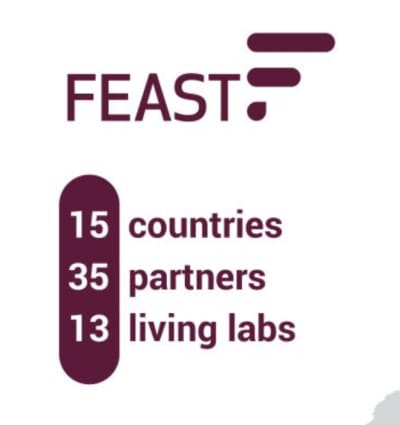Guest blog from Helen Adams, Public Engagement Coordinator for the Livestock, Environment and People (LEAP) project.
The Livestock, Environment and People (LEAP) project is funded by the Wellcome Trust and is the banner project for the Oxford Martin School’s ‘Future of Food’ programme. LEAP brings together researchers and experts from different disciplines across the University and beyond, exploring the impact of meat consumption on human and planetary health through the lenses of health, social and environmental sciences. The LEAP project takes as its starting point the global increase in the consumption of meat and dairy and the premise that such levels of production and consumption are not environmentally sustainable in the long-term. There is also growing evidence to suggest red and processed meat in particular as a risk factor for cardiovascular disease and colorectal cancer. The research team are interested in understanding the reasons people buy and eat meat and what interventions — what actions, messages, and adjustments — might help encourage people to make changes towards more sustainable and healthy diets. The project was invited to take part in Super Science Saturday on Saturday 10 March, 2018. The theme for this event was ‘People and Planet’. Our stand was entitled ‘Nice to Meat You’ and we opted to focus on the environmental and social-domestic contexts of food choices and sustainability. What were our Public Engagement objectives?- To gauge and raise awareness of the relationship between food choices and environmental impact
- To invite views on the acceptability of alternatives to meat and dairy products
- To test the effect of food labelling on taste perception
- To involve families in conversations about the role of meat in their everyday diet
- Older children (7+) quickly grasped the idea that food has an impact on the environment.
- Labelling made little difference to perceived taste
- A substantial number of people, who were not necessarily vegan or vegetarian, would consider buying the two sample products (although far fewer people were keen on the cheese which had a strong smell and unusual texture).
- Many people expected the substitutes to be healthier than the meat and dairy products they were purporting to replace.
- Many people expressed an interest or desire to reduce meat consumption. However, commonly cited barriers were time, convenience and their children’s tastes/acceptability. Many women who were the primary feeders, cooks and/or shoppers in the household reported some difficulty in persuading other family members (e.g. husbands and children) to accept dietary changes and even resorted to deception!
- Of the children’s favourite meals, 40% contained meat, 9% were fish-based and 51% were meat and fish free, of which around half contained diary (cheese/eggs).



